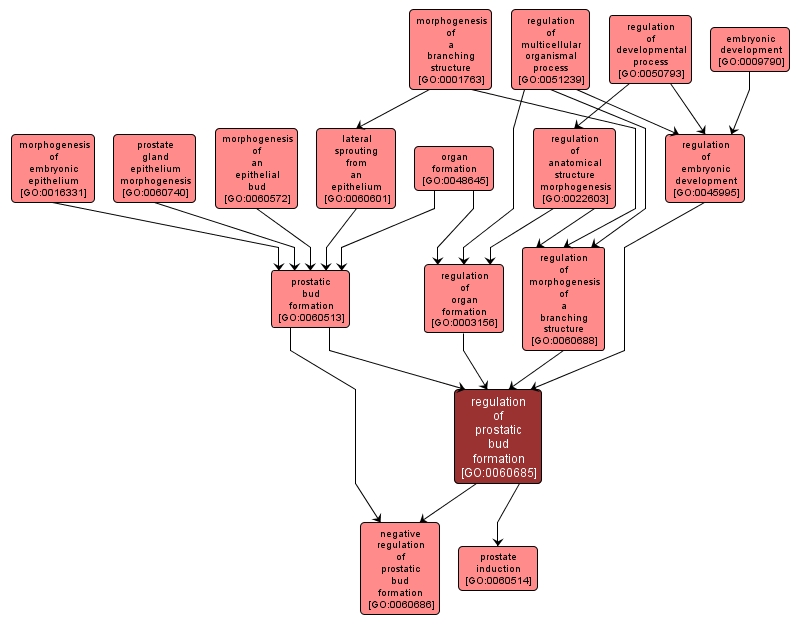GO TERM SUMMARY
|
| Name: |
regulation of prostatic bud formation |
| Acc: |
GO:0060685 |
| Aspect: |
Biological Process |
| Desc: |
Any process that modulates the rate, frequency, or extent of prostatic bud formation, the morphogenetic process whereby a region of the fetal urogenital sinus epithelium is specified to become the prostate, resulting in prostate bud outgrowth. |
|

|
INTERACTIVE GO GRAPH
|














